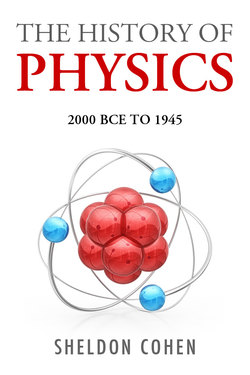Читать книгу The History of Physics from 2000BCE to 1945 - Sheldon J.D. Cohen - Страница 5
На сайте Литреса книга снята с продажи.
THERE ARE ATOMS AFTER ALL
ОглавлениеThe first to experimentally open the door to confirming the atomos theory was Robert Boyle (1627-1691). He was born in Ireland. His father was the richest man in the British Isles. Boyle, to his credit, took advantage of the opportunities that money opened up for him. He became a renaissance man, studying religion, philosophy, mathematics, languages, and the physics of such pioneers as Descartes and Galileo.
His natural philosophic work included an improved vacuum pump that allowed him to make excellent vacuums, and in so doing he demonstrated that air was necessary to sustain life, that sound would disappear in a vacuum, and a candle would stop burning as the air was evacuated.
His main triumph, so familiar to all students of chemistry, was the volume-pressure inverse relationship. Boyle used a J shaped glass tube closed at the shorter end and opened at the long end. When he poured mercury in the tube, air trapped in the closed short end. The more mercury he poured in the less air seemed to be trapped. He made many measurements at atmospheric pressure and also at lower and higher then atmospheric pressure. He determined that when the pressure on the air was increased by the addition of more mercury, the volume of the air decreased, and when the pressure on the air was decreased the volume of air increased.
This was the pressure-volume inverse relationship and it lent credence to the atomistic theory: if air is made up of widely separated atoms, suggested by Democritus, this would explain the fact that air was lighter then solids, where the atoms were closer together. Placing the atoms of air under pressure would push the atoms closer together, thus decreasing the volume of the air.
It all made sense under the atomistic theory. Others could easily reproduce Boyle’s experiments, and the concept of atoms gained the upper hand, finally vindicating the Greek philosophers.
